Again, I did not sleep very well as I had an early morning deadline. I needed to get to the bus station. I packed up my things and tried grabbing an Uber. However, since it was Latin America, only one person was working, and after I hired them, they canceled and turned off their phone. I started to panic and kept refreshing the app until I found someone. A woman picked me up and off we went to the bus station.
 I arrived at the terminal and thanked my driver. I got out and headed in. The bus company I was using had four different offices. Finally, I found the right one and checked in. My bus pulled up a few minutes later. It was a really posh executive one like I had when I went around the Baltics. I loaded my own bag, but the handler asked for a tip. Digging through my pockets, I found a 10 Peso note. I got on, found my seat, put the rest of my stuff down, and relaxed. I was sitting in a butaca or lounge chair that could go back to 160 degrees. It was lovely. There was ambient lighting in the cab as well as a little snack bag with water. I would have liked to have sat up top and seen the panorama of the Andes, but this would have to do.
I arrived at the terminal and thanked my driver. I got out and headed in. The bus company I was using had four different offices. Finally, I found the right one and checked in. My bus pulled up a few minutes later. It was a really posh executive one like I had when I went around the Baltics. I loaded my own bag, but the handler asked for a tip. Digging through my pockets, I found a 10 Peso note. I got on, found my seat, put the rest of my stuff down, and relaxed. I was sitting in a butaca or lounge chair that could go back to 160 degrees. It was lovely. There was ambient lighting in the cab as well as a little snack bag with water. I would have liked to have sat up top and seen the panorama of the Andes, but this would have to do.

Driving through the Andes was beautiful. I passed a ski resort and a few other lodges that were closed for the summer. As we were driving through the snowcapped peaks I had a realization that made me feel kind of stupid. I had seen these vistas before, usually after meals in nice restaurants. Waiting with the checks were little after-dinner mints Andes Chocolate Mints. I had just put two and two together.
We finally got to the customs house dividing Argentina and Chile. It was a large building with room for a lit of buses. It was also very cold as it was right in the middle of the mountain range at Los Libertadores. We had to find our bags and give them to customs agents before we could cross over. Never letting a good non-mobile restroom go to waste, I utilized the facilities. Everyone on the bus had passed through customs and I was the last one. I gave them my papers, they checked me out, stamped my passport, and let me pass. When I got to the conveyor belt where my bag was located, one of the customs agent sniffer dogs was going nuts over my bag: nuzzling it, pushing it, putting its paws on it, and barking. Needless to say, I was getting uneasy. A customs agent with a stern face was watching me watching the dog. Suddenly, the dog dug its snout under my bag and pulled out a rolled towel that one of the agents had put underneath. I guess they were training it, but they gave me a fucking heart attack.

Back in Chile, the calm gentle slope up to Los Libertadores was changed to a switchback trail going down the mountain pass. I kept telling myself over and over again that the driver had done this hundreds of times, but I could feel the center of gravity shift on every turn, especially when we were on the right side of the road. After what felt like an hour, we were back at the nearly level road and continued on to Santiago.
I arrived at the bus depot and hired an Uber that immediately canceled on me. I ordered another and he picked me up straight away. As I was getting ready to sit in the back, he asked me nicely if I could sit up front so he would not have any problems with taxi drivers. I said sure. He was a nice Peruvian guy and we chit-chatted as he drove. I asked him about the situation and he said it had calmed down some and that it wasn’t as bad as when it first started.
He dropped me off right in front of my hostel with no problems. After thanking him, I stood up and looked around. This was not the same street I had left. It looked like Thunderdome. All the shops had welded thick metal barricades in front of their storefronts. The hotel across the street had augmented its heavy iron gate with metal sheeting. I was thinking to myself, what had I come back to?
I headed into the hostel and said hello to the people at the front desk letting them know I had returned. They were very nice and glad to see me. I went upstairs to my empty room and dropped my stuff. I then went out to a now-open grocery store to grab a quick dinner. There were armed guards out front, which made me feel a little better. I went to the hostel, ate, then decided to go out and get some supplies for the week. The grocery store was just about to close when I got in line, so the 25 people left in the store all had to go through one line. After putting my stuff away in the kitchen, I headed up to my room, watched a little TV, and went to sleep after talking to I, letting her know I got back safely.
I did not sleep well as my roommate arrived, banged around, and snored most of the night. I got up, made breakfast, and started a new habit of reading while I drank maté in the morning. It was quiet out, so I wandered down to the Plaza de Armas.
There were rumors circulating that people we being “detained” by the police when I was first in Chile. “Detention” takes a different meaning in Latin America. While men and women were being arrested during their protests, there were stories of protestors being savagely beaten in transit while handcuffed and also the rapes of female protestors by the police. I was well aware that there was a propaganda war going on on both sides, but one side was winning. Taped to every post and flat wall were pictures of people who were missing or injured during the protests.

It was incredibly busy out, with lots of people milling about in the square. I sat down at a little stand and had an Italian pork sandwich. It was OK. However, the protestors returned in full force. I went back to my hostel, got some things from Argentina that I wanted to mail home, and sent them. The process took way too long again as they needed to inspect everything to make sure that I was not mailing forbidden artifacts out of the country.
I went back to the hostel and took a little nap. I woke up and saw that my previous package had already arrived home which was very impressive. I went back out to check the temperature of the protesting and it seemed fine. There was no longer military in the streets, just cops and the Carabineros. Venders were out and shops reopened at least until dusk. I bought some pretty cool-looking brass scorpions from a cart before I walked to a convenience store and purchased some beer for the evening. I went back to the hostel and started cooking dinner. I saw some guy move in wearing an LSU shirt, which was interesting.
After dinner, being serenaded by Pedro Capo’s Calma on television, I walked back out to the street to grab some dessert. Just as I placed my order, I heard the familiar din of the Cacerolazos. As I mentioned before, Operation Condor was a program of state-sponsored extra-judicial rendition, torture, and murder of countless dissidents. While Argentina had their Mothers marching with cloth diapers around their heads, the women of Chile marched in unison banging on casserole pans with the beat of bang, bang, bang-bang-bang. This was adopted by the protestors. I knew it was time to head back.

I passed about 50,000 people in the streets going down O’Higgins from the Palacio de la Moneda to Plaza Italia. It was going to get bad. Water trucks and armored personnel Carriers flanked the Palace. In the other direction, smoke bellowed from the Plaza de Italia.

I quickly got home and tried to quell my uneasiness by watching some TV. It was interrupted by shouting outside. Protestors were running down my block with police in hot pursuit. I was talking to Fooch from Korea about what was going on and showed him a video. He told me it was nuts.

I began looking into options out of the country again but settled on maybe a place not so close to the action. Just then there was a knock on the door. It was the manager of the complex. They wanted to let us know of their evac plan in case anything happened. I chatted with my roommates a little with the now hackneyed line, Bienvenido a Chilezuela or Welcome to Chilezuela. I then got in bed and went to sleep.
The next day, I got up and realized it was the 30th anniversary of when the Berlin Wall came down. I remember being in first grade and that our teacher brought us into an auditorium so we could watch it live. Quite the day.

After brekkie and doing some reading, I checked to see if the coast was clear, which it was, and headed to the Museo de la Memoria (Museum of Memory.) With that, here is a crash course on recent Chilean history. In this period, Chile was very special. The reason being is that they were the first country in Latin America to elect an avowed communist to their presidency, Salvador Allende. A physician and considered a moderate socialist that held various positions in government, running for president multiple times, and evening founding the Socialist Party of Chile, he finally assumed the office of the presidency in 1970. During his reign, his goals were to better the standards of living for the lower classes, increase education, and most notably nationalize private business. Given the era, he made new friends with the leaders of the USSR and Cuba, moving steadily more leftward. This made Washington rightly nervous. As Allende’s policies continued, inflation took hold of Chile devaluing the currency up to 150% by 1972. He nationalized the banking system and copper mining industries, began taking private farmland and redistributing it, and moved to have government-controlled healthcare. A crisis began in August 1973 when the Supreme Court of Chile publically stated that Allende could not enforce the laws of the land. This stemmed from some of the opposition parties enacting amendments that were aimed at slowing Allende’s nationalization efforts. In late August, these parties made a joint resolution to attempt to force Allende to start complying with their laws and constitution as written. However, he was intransigent. On Tuesday, September 11th, 1973, he had planned to make a speech trying to get through the constitutional crisis with a plebiscite; a referendum going directly to the people and not through representatives. Unfortunately for Allende, he would never make that speech. It was at this time, that General Augusto Pinochet, the new commander-in-chief of the armed forces staged a coup with the blessings of the CIA. Before the day ended, Allende would be dead (some say by his own hand, some say otherwise) and the ultra-right-wing Pinochet would be in charge for the next 17 years.
The Museo de la Memoria was about a 30-minute walk away. I set out in the early summer sun, making sure to keep my mind sharp on the lookout for trouble and memorizing my path as I would be venturing into a new area of Santiago. I arrived, got my audio guide, and headed into the museum. It was very modern and had a lot of interesting installations, including a lot of first-hand accounts recorded for posterity. There were a few things that stood out to me regarding the museum.
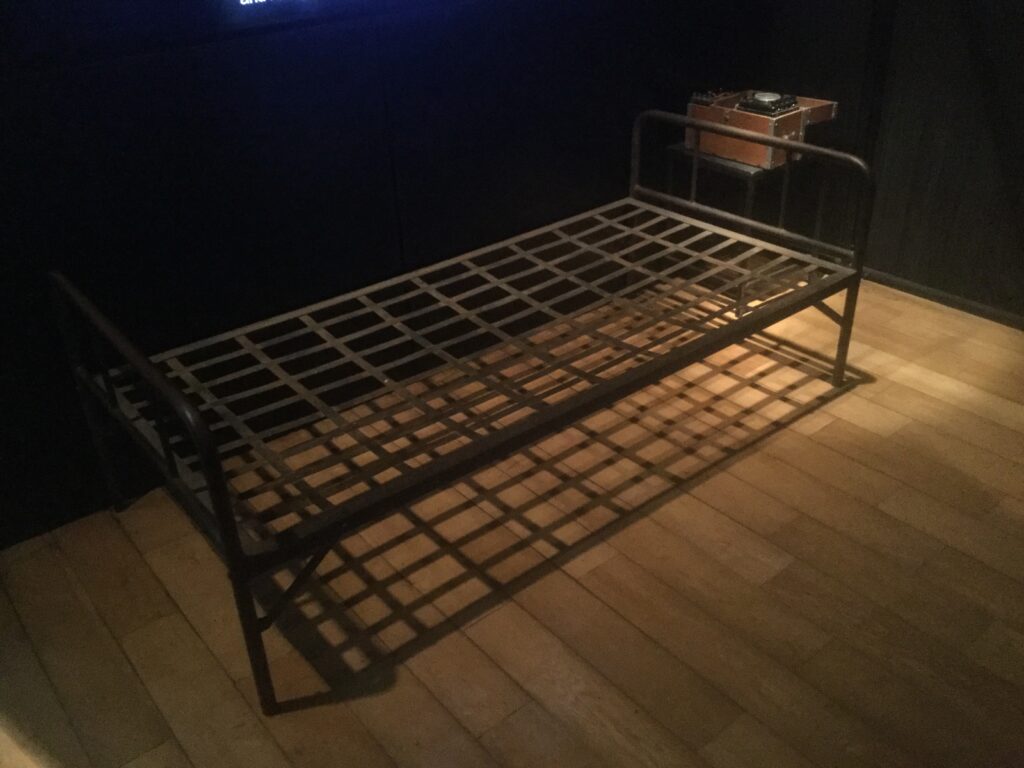
The first was a display of an instrument of torture. Unfortunately, most modern dictators know that simple electricity is incredibly effective. The device I saw was a small box, the exact size of a car battery that had a pair of electric clamps coming out of it. The box had a dial and a gauge on the side letting the administrator choose when to apply it and how much they could. The clamps would be attached to the genitals, nipples, lips or earlobes and the session would begin. What was more disturbing than seeing this device were the stories being displayed in full color next to them by the people that had gone through such torture. It reminded me of Cambodia.

Another aspect of the museum that was haunting was not what you would think. When someone went to a rendition center, like ESMA in Argentina, they were blindfolded 99% of the time they were there. The only time they were allowed to be unblindfolded was when they were in the bathroom. Decorative drains are a thing in Chile, and most of the drains in these detention centers were of seahorses. Seahorses not only became a symbol that one had survived prison if they were released but a sign of rebellion. However, not a lot of people survived their torture or rendition. The ones that died, much like in Argentina were buried at sea, usually tied to railroad rails or sent to an unmarked mass grave in Santiago called Patio 29.
I learned that soon after Pinochet took power, there was a movement to keep people in a perpetual state of fear called Plan Z that used the media to threaten that there was some spectral plot to overthrow the government. To this end, Pinochet’s government also green-lighted assassinations in foreign countries. However, he was not wrong. In 1986, Manual Rodriguez and his associates in the Patriotic Front (the paramilitary wing of the Chilean Communist Party) attempted to assassinate Pinochet. While they killed five of his bodyguards and wounded another 11, Pinochet only had minor injuries.
The last exhibit was of Pinochet stepping down from his duties in 1990. What it did not show was that he was still commander-in-chief of the military until 1998. He retired but remained a senator for life until he took a trip to London where he was arrested for human rights violations. Citing his poor health, he was released to Chile in 2000. A case was brought against him in 2004 for hundreds of human rights violations, tax evasion, and embezzlement. By the time of his death in 2006, he had over 300 criminal charges winding through the Chilean courts.

It was quite an experience and really filled in my gaps in knowledge regarding this time in Chilean and world history. Afterward, I went and had lunch at a lovely restaurant as I made my way back to my hostel. It was a long day and it was hot, so I just relaxed for the rest of the day.

The next day, I was finally able to take a walking tour. I met our guide, Chris from York, Pennsylvania, and walked from Bellas Artes to the Plaza de Armas to the Mercado Central to another market called Las Vegas. I learned many things about the city and its inhabitants. A few examples are that in the last market we visited, people decided to make a telenovela series called Amores de Mercado with that market being featured. I learned that in the month of September, one could be fined if they do not display a Chilean flag. I learned there is a dance called the Queca which is supposed to mimic a rooster conquesting a hen. I learned that immigrants and stray dogs have the same number in Santiago, 1.2 Million. I also learned that there is a code in the Chilean military called a Tomar Once. This literally means to take an 11, which just happens to coincide with the exact number of letters of the powerful alcoholic spirit agua ardiente. I learned that the Spanish word vega means a water meadow. And finally, the slang for a wine bar where one can sample the many varietals of Chilean wine are call boca nariz (mouth nose.)
After our tour, I headed to a seafood restaurant that overlooked part of the central market. I ordered some fish, but unfortunately, they were out of corvina (Chilean sea bass.) When my meal was through, I headed back to the hostel and chilled out for a bit. I then decided I needed a few things at the market.
One of the things I loved about South America was the exquisite, exotic, and cheap produce, especially the fruit. In the produce section of the supermarket, I picked up something that looked like an apple with scales. This was a chirimoya. Unfortunately, I had no idea how to prepare it, but still got it anyway and planned to figure it out. I went back to the hostel, cooked dinner, and attempted to eat my chirimoya. I guess it was very unripe and hard as a rock. I made due. The taste was not flavorful and its seeds were gigantic. I guess I would have to do some more research about them.
Before going to bed, I talked with I for a while. She was nervous and excited about going to Antarctica, already having gotten to Ushuaia. She had a few days to explore. I told her about what I had done and what to look for. We said our goodnights, and I climbed into bed.
The next morning I texted I, then headed down for breakfast. I finished up Eddie’s book while sipping my maté just in time for the kitchen to close. I then headed out.

Just across the street was an Armored Personel Carrier that had been doused in multicolored paint by protestors. It was a sight to behold. I tried finding a bank that allowed ATM withdrawals as most of the banks and all businesses were boarded up. I eventually did and went and got some empanadas for lunch, washing it down with an Inca Kola.

Inca Kola is one of those rare soft drinks that outperform American exports and had been since its inception in Peru in 1935. Its yellow color and flavor reminiscent of bubblegum has been a staple in the region for generations. Coca-Cola (notoriously once using the South American export of cocaine) decided that instead of beating them, they should just buy them, which they did in a joint venture with the original family in 1999.
After lunch, it looked like things were about to heat up protest-wise, so I went back to the hostel and hung out, catching up on work and a few shows. After it passed, I then headed back out to the Plaza de Armas. Not a lot was going on there, so I went back to the hotel across the street and had a native spirit called Pisco. Much more on that later.

The next day, to celebrate a week of being 37, I headed over to Santo Cristobal Hill, the one that was pointed out on my walking tour. It was like a terraced park that went up the side of a mountain in the middle of the city. However, given the political climate, it was difficult to get around the park as the guards did not want it to be a rally point for a huge protest that was planned. I was allowed in, but only for a little while. It was nice, and I was able to get some good views of the cities. The best part is they had slides that would take you back down to street level!

I then walked over to the Las Vegas market. It is a giant market, very different from the central one, with all sorts of wares to buy: from food to cooking implements, holistic medicines, and lots of restaurants. I had lunch at a little place within the confines of the complex, sitting at a stool with the rest of Santiago going by. I felt like a local. And paid like one too.

I got back to the hostel just in time for the party to start. This was to be the biggest protest I had ever seen to this point. There had to be at least 100,000 people in the streets, walking to and from the Plaza Italia to the Palacio de la Moneda. I hunkered down with the rest of the foreigners in the hostel. I educated the new arrivals, a pair of Norwegian girls and an Iranian national that was living in Canada. We all got tear-gassed when the manager opened the door to quickly let more guests return.
I hadn’t heard from I, as she was going to dinner with some German girls and a Dutch guy after exploring the glaciers in Ushuaia. I had to say, I was getting a little jealous. I understood it made absolutely no sense, but feelings surpass reason far too often.
The next day was an admin day where I needed to deal with some client issues as well as get paid. I decided to make something new for dinner and headed to the fish market for some shrimp. Unfortunately, the boat did not come in that day, so I resigned myself to purchasing some street meat to finish off my recipe. I had some wine, met a British couple that had just moved in, talked to the Norwegian girls some, hung out, and talked to I for a bit on her last night on land.
The next day, I wanted to see a bit more of the city before it descended into chaos usually by the afternoon. I walked over to the Salvador Allende Art Museum, not really to see the art. Although, a lot of it was cool, especially a piece about drone footage being used in the protests. The real reason I went was that this building, nestled in the intellectual corridor by the University of Santiago, a haven for Leftist thought, was that it was the former headquarters of the Secret Police under Pinochet.
I left the museum and the protest was starting. I hurried to the Plaza de Armas and had lunch of an Italian pork sandwich and quickly returned to the hostel. I checked in with I and she made it on the boat and was heading south. Since it wasn’t too bad yet, after talking to some clients and dinner, I decided to venture out for dessert right across the street. As I was coming back, it started to get a lot worse.
In the hostel, I was chilling out and having some wine, watching the news about how they are discussing changing the constitution. As things were getting pretty hairy outside, I went up to my room and tried to tune out the chaos below. This did not work well. I heard a ruckus. Some looters tried sacking the pharmacy next to the hostel, so the cops came, flung tear gas and the looters dispersed. That happened about three times. When looters took out bolt cutters and tried opening the doors of the hostel, I ran down the stairs, told the front desk girl and she called the police. We chatted a bit, then I headed back to my room and looked down. All of the looters were kissing the pavement with the police standing over them.

The next day, I figured I needed to get a leg up on the day as it was a Friday and the fourth week of protesting. I only had a few days left, so I got an Uber and headed to Villa Grimaldi in the outskirts of Santiago. Much like ESMA in Argentina, Villa Grimaldi was a rendition, interrogation, and torture site for political prisoners during the dictatorship of Pinochet. In operation from mid-1974 to mid-1978, approximately 4500 men and women were processed, with about 240 becoming “disappeared.”
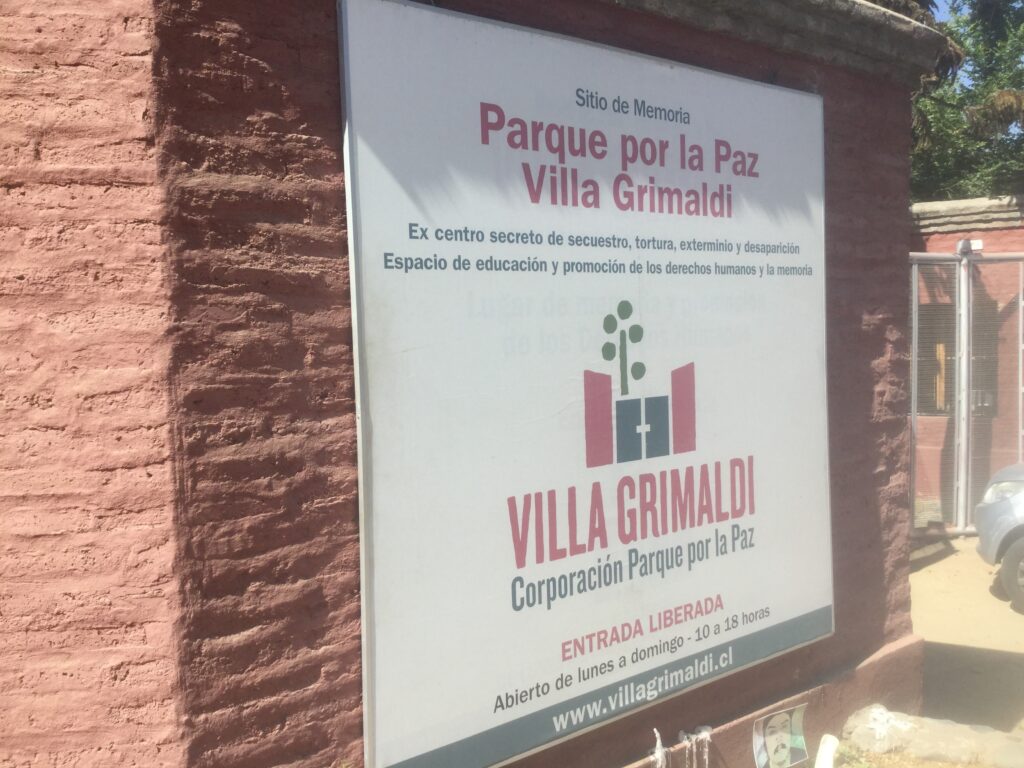 It was a pretty stirring memorial, even given everything I had seen already. As the property was sold and a lot of the holding and torture structures were demolished, when the property fell into public hands, a lot of the things were recreated.
It was a pretty stirring memorial, even given everything I had seen already. As the property was sold and a lot of the holding and torture structures were demolished, when the property fell into public hands, a lot of the things were recreated.
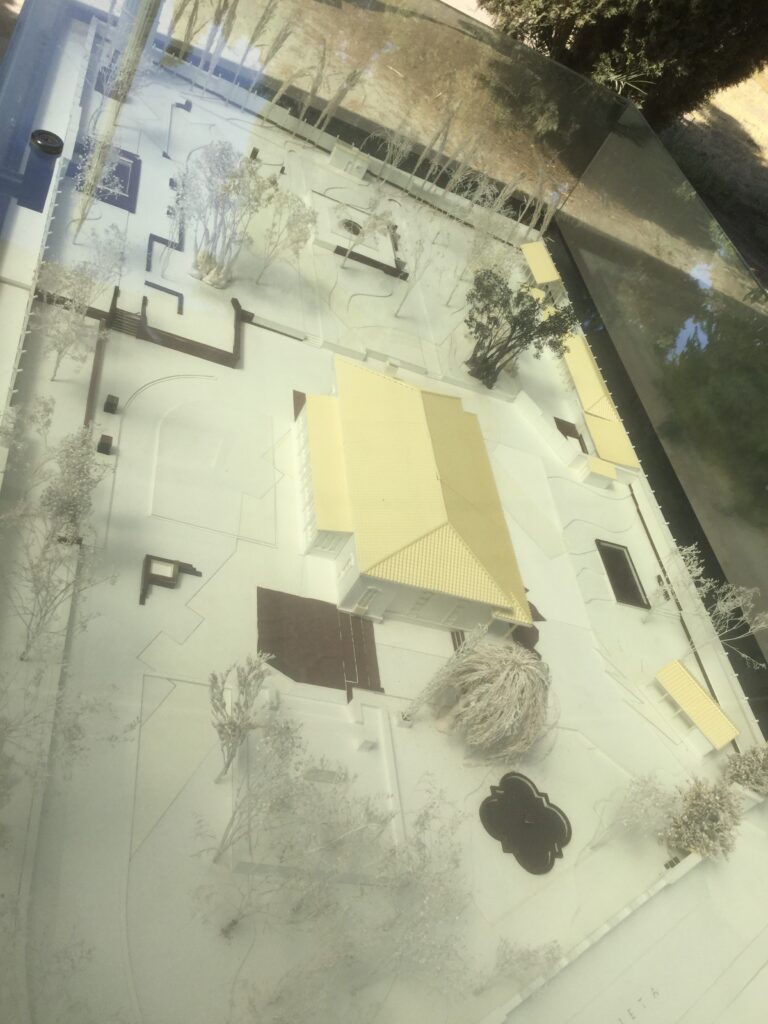
On my Uber ride back to the city, I had probably one of the most difficult Spanish conversations of my life. Not due to the subject matter, but simply trying to understand my driver’s incredibly thick working-class Chilean accent. I asked him to repeat a lot, but he did not seem to mind.
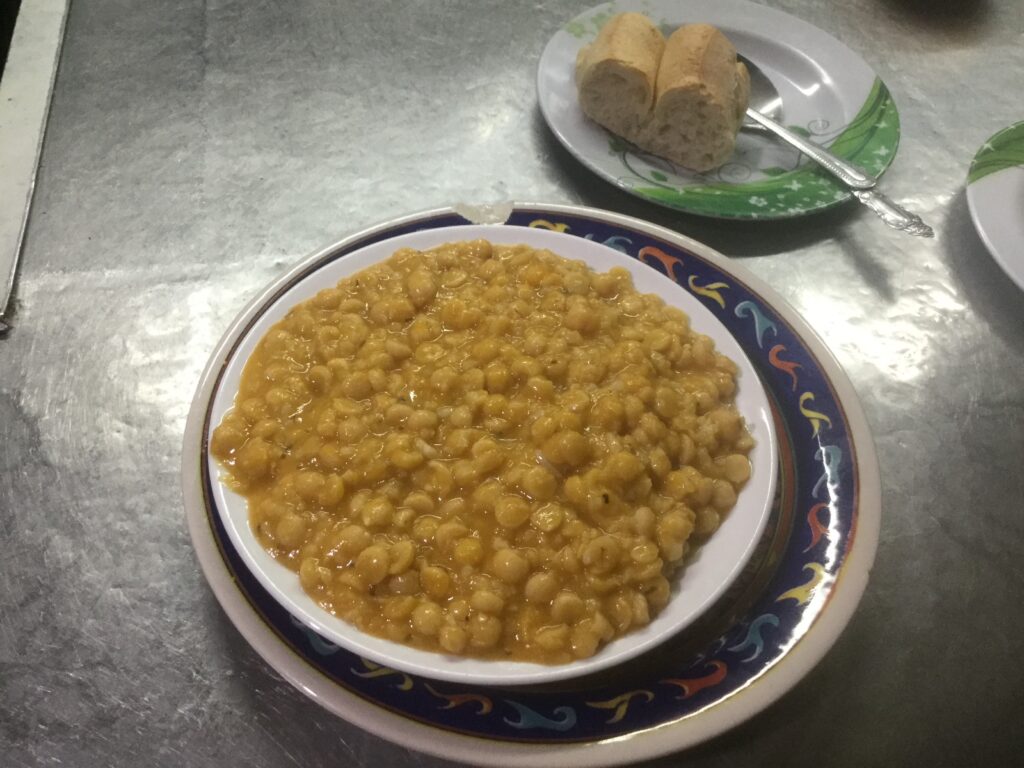
I was dropped off at the Las Vegas for lunch where I got an extremely large garbanzo bean soup for $2. It was very good.
Given the emotional nature of the day, I decided to head back to the hostel and take a little nap. Afterward, since it was relatively calm, I headed out for a little walk and then cooked dinner. I had a nightcap of some wine watched the news and then went to bed.

The next day, was very chill. I did not do a lot except head out to lunch at a pizza place and had quite the experience. As someone that is often scoffed at for being a fan of pineapple on their pizza, I decided to take it to the next level and have a Chilean tropical pizza. The toppings included plantains, maraschino cherries, as well as pineapple. It was not as gross as it sounds.
Seeing how my travel times would be over soon, I was thinking about extending them for an entire year. I talked with Lucia from Vietnam about her times in Morocco, so I could add one more continent to my list. I also mentioned coming to visit I in the Netherlands. After talking to some friends and some clients, I walked around a little, made dinner, played on the computer and went to bed.

On my last day in Chile, I decided I was going to walk around and see what I could see. I figured it would be calm, especially since it was in the early morning. I decided to head to the Plaza Italia, the ending point of the citywide protests. The air was thick with the remnants of tear gas. Apparently, several kinds were being used. One was more liquid in a aerosol form and the other was more of a powder. Just walking the sidewalk was kicking both into the air. I had my scarf with me, so I wrapped my face to keep as much out of my lungs as I could. My sunglasses kept it mostly out of my eyes.

I arrived at the Plaza and immediately noticed all the graffiti on the central statue. Other people were there, so I took some photos and skedaddled. I had not gotten really any mementos for myself on this leg of the journey, so I walked over to the Santa Lucia craft market. After looking around, I found a clay figure of Kotaix, the Selk’nam Hain demon with an elongated head as a reminder of the true nature of evil.
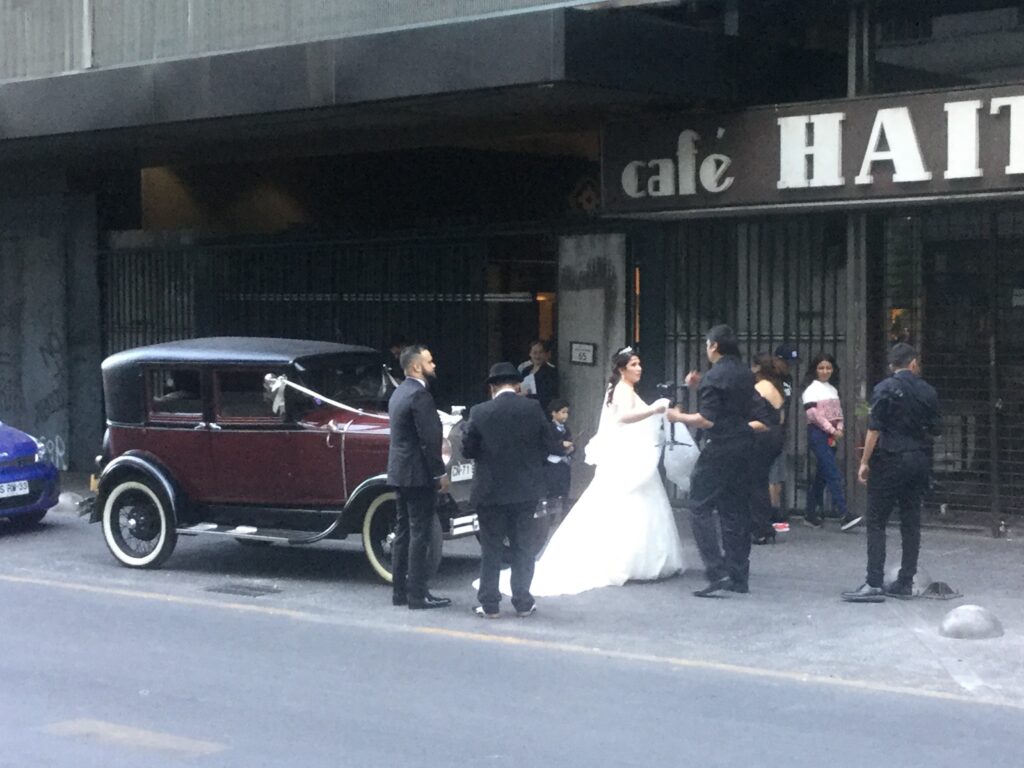
I went to a restaurant called Tio Willy for lunch, packed a little, did some work, then headed out to get some mote after dinner. On my way back, there was a couple taking wedding photos. It struck me as someting oddly inspiring. Amongst the grafiti, the leftover teargas particles, and the fortress of freshly welded twisted metal barricades, this couple inspite of it all had gotten married and were starting their new lives. It was beautiful and a testament of the human spirit. Also, it was probably not refundable.
When I returned to the hostel, I asked around for some recon on the transport situation and they said that I should be OK going to the airport. After that, I came back, watched some YouTube, then went to bed.
Lima (and my destiny) in the morning.








No comment yet, add your voice below!